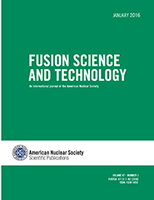
FUSION SCIENCE AND TECHNOLOGY
Scope & Guideline
Advancing sustainable energy through innovative fusion research.
Introduction
Aims and Scopes
- Fusion Physics and Plasma Dynamics:
Research related to plasma confinement, stability, and dynamics, including studies on tokamaks, stellarators, and inertial confinement systems. - Material Science and Engineering for Fusion:
Investigations into materials used in fusion reactors, including plasma-facing components, structural materials, and tritium-compatible materials. - Tritium Management and Fuel Cycle:
Studies focusing on tritium production, recovery, and management within fusion fuel cycles, including isotope separation technologies. - Neutronics and Radiation Effects:
Research on neutron interactions, radiation damage to materials, and safety assessments related to fusion environments. - Reactor Design and Engineering:
Development and evaluation of engineering designs for fusion reactors, including heat transfer systems, vacuum systems, and power supply systems. - Advanced Diagnostics and Instrumentation:
Innovations in diagnostic techniques and instrumentation for monitoring and controlling fusion processes. - Computational Modeling and Simulations:
Utilization of computational methods and simulations to study various phenomena in fusion science, including plasma behavior and material interactions.
Trending and Emerging
- Advanced Plasma Diagnostics:
There is an increasing focus on developing sophisticated diagnostics to better understand plasma behavior and improve confinement methods, which are crucial for the success of fusion reactors. - Material Resilience and Performance:
Research on the performance of new materials under fusion-relevant conditions is gaining traction, particularly concerning their ability to withstand radiation damage and high heat flux. - Innovative Tritium Recovery Techniques:
Emerging studies emphasize new methods for tritium recovery and management, highlighting advancements in separation technologies and environmental safety measures. - Integration of Machine Learning and AI:
The application of machine learning and artificial intelligence in modeling and optimizing fusion processes is on the rise, indicating a shift towards data-driven approaches. - Hybrid Fusion Technologies:
Research into hybrid systems that combine fusion with other energy technologies is trending, reflecting a broader exploration of sustainable energy solutions. - Environmental Impact and Safety Assessments:
Increased attention is being paid to the environmental and safety implications of fusion technologies, aligning with global concerns about sustainable energy and public health.
Declining or Waning
- Historical Studies of Fusion Research:
Papers focusing on historical perspectives of fusion research, while valuable, have seen a decrease in frequency as the field shifts towards current technological challenges and solutions. - Basic Theoretical Studies:
Research predominantly focused on theoretical frameworks without experimental validation or practical application is declining as the journal emphasizes applied and experimental research. - Conventional Fusion Reactor Concepts:
Interest in traditional fusion reactor concepts, such as simple tokamak designs without innovative modifications, is waning as research pivots towards advanced and hybrid systems.
Similar Journals
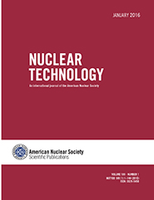
NUCLEAR TECHNOLOGY
Fostering Breakthroughs in Nuclear ApplicationsNUCLEAR TECHNOLOGY is a leading academic journal published by TAYLOR & FRANCIS INC, dedicated to the expansive field of nuclear science and engineering. With a robust ISSN of 0029-5450 and an E-ISSN of 1943-7471, this journal provides invaluable insights and cutting-edge research from 1971 to 2024. Positioned in the esteemed Q2 category for Condensed Matter Physics, Nuclear and High Energy Physics, and Nuclear Energy and Engineering, it boasts respectable Scopus rankings, underscoring its impact and relevance within the academic community. NUCLEAR TECHNOLOGY serves as a crucial platform for researchers, professionals, and students, fostering an exchange of knowledge that advances the understanding and application of nuclear technologies. While it operates on a subscription model, this journal remains a vital resource for those aiming to contribute to or stay at the forefront of developments in nuclear technology.
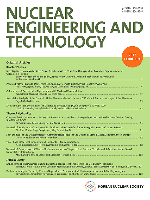
Nuclear Engineering and Technology
Unleashing Potential: Your Gateway to Nuclear ResearchNuclear Engineering and Technology, published by the Korean Nuclear Society, is a premier Open Access journal dedicated to the rapidly evolving fields of nuclear energy and engineering. Established as a significant platform for scholarly communication since 2008, this journal has consistently anchored itself in the academic community, achieving a Q2 ranking in its category as of 2023, reflecting its influence and quality within the domain of Nuclear Energy and Engineering. With an impressive Scopus ranking of #15 out of 77, positioning it in the 81st percentile, the journal publishes cutting-edge research that addresses both fundamental and applied aspects of nuclear technology. Nuclear Engineering and Technology embraces an open access model since 2013, ensuring that valuable research is accessible to a global audience, thereby enhancing collaboration among researchers, professionals, and students passionate about advancing nuclear technology. The journal serves as an essential resource for those aiming to innovate and push the boundaries of knowledge in nuclear sciences.
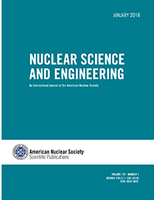
NUCLEAR SCIENCE AND ENGINEERING
Empowering Research in Nuclear Energy and EngineeringNUCLEAR SCIENCE AND ENGINEERING, published by Taylor & Francis Inc, is a leading journal in the field of nuclear energy and engineering, providing a vital platform for disseminating cutting-edge research and advancements from both academia and industry. With an ISSN of 0029-5639 and an E-ISSN of 1943-748X, the journal boasts a notable impact factor and is categorized in the Q2 quartile for 2023, reflecting its influence and quality in the field. Covering a comprehensive scope from the inception of nuclear technology in 1969 to contemporary advancements forecasted for 2024, it ranks #38 out of 77 in the Scopus Energy – Nuclear Energy and Engineering category, placing it in the 51st percentile. Although the journal is not open access, it remains essential for researchers, professionals, and students seeking to stay abreast of the latest developments and innovations in nuclear science. Located in the heart of Philadelphia, NUCLEAR SCIENCE AND ENGINEERING contributes significantly to the advancement of nuclear engineering knowledge and practice, making it a crucial resource for anyone involved in this dynamic field.

ATW-INTERNATIONAL JOURNAL FOR NUCLEAR POWER
Shaping the Future of Nuclear Power GenerationATW - International Journal for Nuclear Power is a premier journal dedicated to advancing the understanding and application of nuclear technology within the energy sector. Published by INFORUM Verlags-Verwaltungsgesellschaft mbH, this esteemed publication provides a platform for researchers, professionals, and students to disseminate cutting-edge research, practical applications, and critical analyses related to nuclear power generation. Although it has discontinued coverage in Scopus since 2012, its long-standing contributions to the field since 1996 underscore its significance and relevance. The journal aims to bridge the gap between theoretical insights and real-world applications, ensuring that stakeholders are well-informed on the latest trends, safety protocols, and innovations in nuclear power. With a commitment to fostering knowledge dissemination and collaboration, ATW continues to be an essential resource for anyone involved in the nuclear energy landscape.
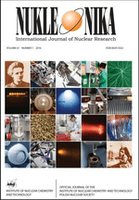
NUKLEONIKA
Innovating Tomorrow's Energy SolutionsNUKLEONIKA, published by SCIENDO, is a leading open access journal that has been serving the scientific community since its establishment in 1968. Focused on the domains of Nuclear and High Energy Physics, Condensed Matter Physics, and Nuclear Energy and Engineering, this journal provides a platform for innovative research and technological advancements in a variety of interdisciplinary fields. With an impressive history of publications and a current Q3 ranking in several categories, including Safety, Risk, Reliability and Quality and Waste Management and Disposal, NUKLEONIKA is recognized for its significant contributions to scientific discourse. Open access since 2014, the journal ensures that all research outputs are freely available, facilitating broad dissemination and accessibility for researchers, professionals, and students alike. Located in the heart of Warsaw, Poland, NUKLEONIKA aims to inspire collaborative efforts and foster a deeper understanding of complex physical phenomena and their practical implications.

ATOMIC ENERGY
Advancing nuclear knowledge for a sustainable future.ATOMIC ENERGY is a distinguished journal published by SPRINGER, focusing on pivotal advancements and research within the field of Nuclear Energy and Engineering. With an ISSN of 1063-4258 and an E-ISSN of 1573-8205, this journal has been a critical resource since its inception in 1956, serving both historic and contemporary scientific inquiries into nuclear technologies. Currently positioned in Q3 of the Nuclear Energy and Engineering category, ATOMIC ENERGY ranks 49 out of 77 in Scopus, representing a percentile of 37%, highlighting its relevance in the research community. While it is not an open access journal, it continues to draw a diverse readership eager to engage with the latest findings and innovations in nuclear science. The journal’s objectives include fostering collaborative research, sharing expertise, and addressing contemporary challenges in nuclear energy. As such, ATOMIC ENERGY remains an essential platform for researchers, professionals, and students alike, contributing significantly to the ongoing dialogue in the field.

PHYSICS OF PLASMAS
Advancing Knowledge in Fusion and Astrophysical PlasmasPhysics of Plasmas is a premier peer-reviewed journal published by AIP Publishing, focusing on the vital and interdisciplinary field of plasma physics. With an ISSN of 1070-664X, this journal presents cutting-edge research that spans a wide array of topics including fusion energy, astrophysical plasmas, and industrial applications of plasma technologies. As a recognized leader in the field, it holds a prestigious Q1 ranking in Condensed Matter Physics, reflecting its high impact and quality of published work. The journal's scope encompasses both fundamental studies and innovative applications, serving as an essential resource for researchers, professionals, and students alike. Although it does not offer open access, its rigorous selection process ensures that only the most significant contributions are highlighted. With a convergence of expertise from 1994 to 2024, Physics of Plasmas continually shapes the future of plasma research and technology, making it a critical avenue for sharing discoveries and advancements in this dynamic area of physics.
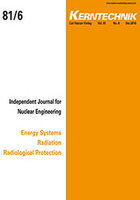
KERNTECHNIK
Exploring the frontiers of materials and energy science.KERNTECHNIK is a distinguished journal specializing in the fields of Materials Science, Nuclear and High Energy Physics, and Nuclear Energy and Engineering. Published by WALTER DE GRUYTER GMBH, this journal has continuously contributed to advancing knowledge and research in nuclear technologies and related safety measures since its inception in 1969. With an ISSN of 0932-3902 and an E-ISSN of 2195-8580, KERNTECHNIK serves as a vital platform for academics and professionals seeking to delve into both theoretical and practical aspects of nuclear science and technology. Though listed in the Q4 quartile across multiple categories in 2023, the journal's commitment to publishing rigorously peer-reviewed articles ensures that it remains a respected resource, facilitating academic discourse and innovation. It is particularly aligned for those conducting research or working in safety, risk, reliability, and quality within the nuclear sector, and its extensive historical archive allows for in-depth exploration of evolving technologies. Aimed at foster cooperation between researchers, policymakers, and industry experts globally, KERNTECHNIK continues to play an important role in shaping the future of nuclear science.

Problems of Atomic Science and Technology
Pioneering Research in Atomic Phenomena.Problems of Atomic Science and Technology is a leading journal in the realm of nuclear physics and technology, published by the esteemed Kharkov Institute of Physics and Technology. With an ISSN of 1562-6016, this journal is dedicated to disseminating high-quality research and advancements in atomic sciences, contributing significantly to both academic and practical applications in the field. Although not an open access publication, it ensures rigorous peer review standards to maintain the integrity and relevance of cited works. The journal seeks to provide a vital platform for researchers, professionals, and students who are engaged in the exploration of atomic phenomena, nuclear engineering, and associated technologies. Published from Kharkov, Ukraine, the journal also serves as a bridge for international collaboration and innovation, making it indispensable for anyone looking to stay at the forefront of atomic science research.

ATOMIC DATA AND NUCLEAR DATA TABLES
Advancing knowledge in atomic and nuclear physics.ATOMIC DATA AND NUCLEAR DATA TABLES, published by Academic Press Inc Elsevier Science, is a leading journal in the fields of atomic and molecular physics, as well as nuclear and high energy physics. With an ISSN of 0092-640X and an E-ISSN of 1090-2090, this esteemed journal has been providing comprehensive data tables and significant research insights since its establishment in 1969. Spanning until 2024, it continues to serve as an invaluable resource for researchers and professionals aiming to deepen their understanding of atomic interactions and nuclear processes. Holding a commendable Q2 ranking in both relevant categories, it is recognized for its impact, reflected in Scopus rankings, where it ranks 25th out of 87 in Nuclear and High Energy Physics, and 87th out of 224 in Atomic and Molecular Physics. While it does not offer open access, the journal remains a crucial repository for high-quality data essential for scientific endeavors and advancements in these complex fields.